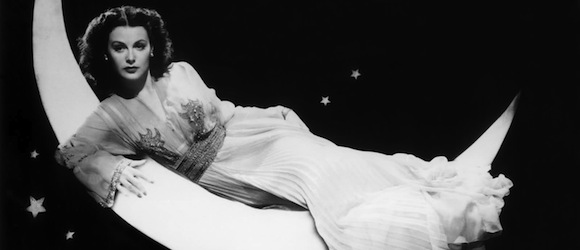That Time Hedy Lamarr Invented Wifi
For A More Civilized Age

Hedy Lamarr was a mathematically inclined Jewish woman who fled an abusive, Nazi-sympathizing husband, rescuing herself and her mother from who-knows-what fate in Germany to Paris and eventually Hollywood, where she became one of the biggest stars of MGM’s Golden Age. She’s mostly famous for the latter achievement: that of playing glamorous, seductive women in some of the most successful movies of the forties. But, as Gizmodo relates, she’s made other lasting contributions to modern culture: she invented some of the basic principles that Wifi technology is based on.
And we don’t even mean that in an indirect way.
Remember that Lamarr was mathematically inclined? Her first husband (of six), the aforementioned abusive Nazi-cooperator, was an arms manufacturer who supplied the Axis powers. At the many political and business dinners she was forced to attend, by a husband who sometimes refused to allow her to leave the house, she spent time among the military and engineering elite of Nazi Germany. From them she learned of the difficulty inherent in controlling a torpedo with radio signals after it had been launched, and how the signals could be intercepted or overpowered by the enemy. It seemed clear to her that these problems could be surmounted by varying the frequency at with the signals were transmitted.
If the channel was switched unpredictably, the enemy wouldn’t know which bands to block. But her ingenious “frequency-hopping” idea was just a hunch until Lamarr met fellow amateur inventor George Antheil at a Hollywood dinner.
Antheil had been experimenting himself with controlling musical instruments with radio signals, creating avant guarde musical compositions that could only be played by multiple player pianos, among other, even weirder musical experiments.
To realise Lamarr’s idea, Antheil proposed coordinating transmitter and receiver by controlling the switching between channels with two identical piano rolls running at the same speed.
At least that was the analogy – and the analogy was what sunk their plan. When the US navy rejected their invention, Antheil remarked: “My God! I can see [them] saying, ‘We can’t put a player piano into a torpedo!'” The usefulness of their idea went unrecognised until the 1950s, and unimplemented until the 60s.
However, the patent on this idea “frequency hopping” was awarded to Antheil and Hedy Kiesler Markey (her married name at the time) in 1942, and has become the basis for spread-spectrum communication technology (or, technology that uses an array of frequencies for one radio signal, in order to increase the base signal’s bandwidth) one of the foundational ideas that supports Wifi signals, and makes it so you can’t hear other people’s conversations on your own cell phone.
Read the whole story at Gizmodo!
Have a tip we should know? [email protected]